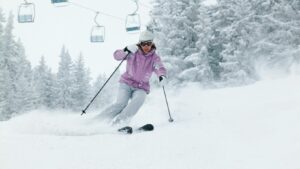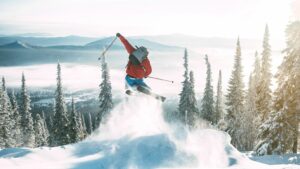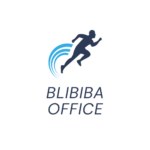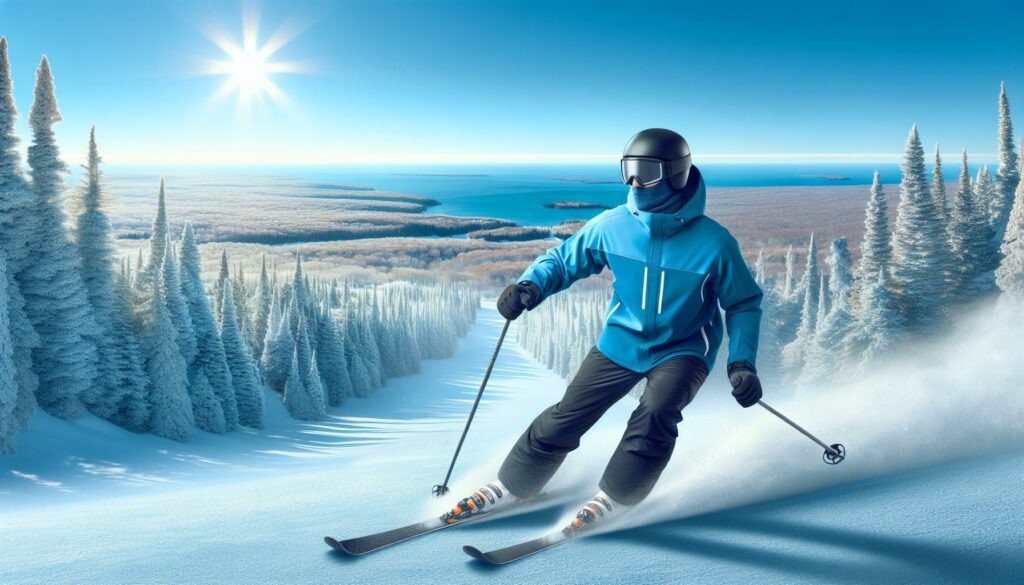As an avid skier who’s explored countless slopes across the Midwest I can confidently say that Porcupine Mountains Wilderness State Park offers one of Michigan’s most unique skiing experiences. This hidden gem tucked away in the western Upper Peninsula combines pristine natural beauty with thrilling downhill runs.
I’ve discovered that what makes “”the Porkies”” truly special is its perfect blend of rustic charm and modern amenities. With 15 runs ranging from gentle beginner slopes to challenging black diamonds the mountain caters to all skill levels. The best part? You won’t find the long lift lines or overcrowded slopes that plague many popular ski resorts. Instead you’ll experience pure Michigan wilderness with breathtaking Lake Superior views and snow-covered ancient forests surrounding you as you carve through the fresh powder.
Porcupine Mountains Skiing
- The Porcupine Mountains Ski Area offers 15 diverse runs across 220 acres, featuring a 641-foot vertical drop and annual snowfall exceeding 200 inches
- Lift tickets are remarkably affordable at $45 for adult day passes, about 50-70% less than major resorts, with minimal wait times rarely exceeding 5 minutes

- The terrain includes beginner (27%), intermediate (46%), and advanced (27%) trails, accommodating all skill levels while maintaining natural features and authentic mountain conditions
- Prime skiing season runs December through March, with optimal snow conditions and base depths occurring in January and February
- The eastern-facing slopes and natural terrain features help maintain excellent snow quality, while panoramic Lake Superior views provide a unique skiing experience
- Modern amenities include comprehensive rental services, lodge facilities, and diverse lodging options from heated yurts to rustic cabins, all within 15 miles of the slopes
Why the Porcupine Mountains Are a Hidden Ski Gem
The Porcupine Mountains offer pristine ski conditions with an average annual snowfall of 200+ inches. I’ve discovered that this natural powder creates perfect skiing conditions from December through March, without the need for extensive artificial snow-making.
The uncrowded slopes set this destination apart from mainstream ski resorts. During peak season, I rarely wait more than 5 minutes in lift lines, compared to 30+ minute waits at popular destinations like Vail or Aspen.
Here’s what makes the Porcupine Mountains truly exceptional:
- Natural terrain features enhance skiing experiences with varied topography including glades, bowls and ridges
- Affordable lift tickets cost 50-70% less than major resorts ($45 for adult day passes)
- Panoramic Lake Superior views appear at multiple points along the ski runs
- Beginner-friendly learning areas occupy 30% of the skiable terrain
- Pristine wilderness surroundings create a peaceful atmosphere without commercial development
The mountain’s vertical drop of 641 feet provides challenging runs while remaining accessible. I’ve found the mix of terrain particularly appealing:
| Difficulty Level | Number of Runs | Average Length |
|---|---|---|
| Beginner | 5 | 1,800 feet |
| Intermediate | 7 | 2,200 feet |
| Advanced | 3 | 2,600 feet |
The slope’s eastern exposure protects the snow quality by limiting direct sunlight exposure. This positioning maintains optimal skiing conditions throughout the day, especially on the expert runs tucked into the northern faces.
Overview of the Porcupine Mountains Ski Area
The Porcupine Mountains Ski Area spans 220 acres of pristine terrain in Michigan’s Upper Peninsula, featuring one double chairlift, one ski tow, and modern grooming equipment. The ski area combines rugged natural landscapes with essential amenities, creating an authentic alpine skiing experience.
Trail Difficulty and Ratings
The ski area includes 15 marked trails distributed across difficulty levels:
- 4 green trails (27%) offer gentle slopes perfect for beginners
- 7 blue trails (46%) provide intermediate challenges with moderate pitches
- 4 black diamond trails (27%) deliver advanced terrain with steep gradients
Each trail maintains its natural character with minimal artificial modifications, allowing skiers to experience authentic mountain skiing conditions. Green trails average 8-12% slopes, blue trails range from 15-25% slopes, and black diamond runs feature 30-40% gradients.
Vertical Drop and Terrain Features
The mountain’s 641-foot vertical drop creates diverse skiing opportunities across varied terrain:
- Upper mountain features exposed ridgelines with panoramic Lake Superior views
- Mid-mountain section includes natural glades and rolling bowls
- Lower mountain offers protected trails through old-growth forest
- Natural halfpipes formed by ancient glacial valleys
- Wind-protected tree runs between trails
- Multiple fall lines on single runs
- Natural snow-catching ridges that preserve powder conditions
| Terrain Feature | Elevation (ft) | Location |
|---|---|---|
| Summit | 1,937 | Upper Mountain |
| Mid-Station | 1,620 | Mid-Mountain |
| Base Area | 1,296 | Lower Mountain |
Best Time to Go Skiing at Porcupine Mountains
The optimal skiing period at Porcupine Mountains extends from early December through late March. I’ve found the combination of Lake Superior’s lake effect snow patterns with the region’s cold temperatures creates reliable skiing conditions throughout the winter season.
Snow Conditions and Annual Snowfall
The Porcupine Mountains receive an average of 200+ inches of natural snow annually, with the deepest base depths occurring in January and February. Lake effect snow events deposit 8-12 inches of fresh powder 2-3 times per week during peak winter months, creating pristine skiing conditions. The eastern-facing slopes maintain snow quality by limiting direct afternoon sun exposure, while the dense forest coverage protects the snow from wind scouring.
| Month | Average Snowfall | Base Depth |
|---|---|---|
| December | 45 inches | 24-36 inches |
| January | 65 inches | 36-48 inches |
| February | 55 inches | 40-50 inches |
| March | 35 inches | 30-40 inches |
- Morning sessions (9 AM – 12 PM): Fresh groomed runs with minimal lift lines
- Early weekdays: 50% fewer skiers compared to weekends
- Non-holiday periods: Maximum 5-minute lift waits
- Late February: Longer daylight hours with consistent snow coverage
- Early March: Warmer temperatures with maintained snow quality
- Early December: Reduced rates with building base conditions
Facilities and Amenities
The Porcupine Mountains Ski Area provides essential facilities to support winter sports activities across its 220-acre terrain. The modern amenities combine functionality with rustic charm while maintaining the wilderness atmosphere.
Lodge Services and Equipment Rentals
The main ski lodge offers comprehensive rental services with 200+ sets of alpine skiing equipment including skis boots poles. The rental shop features:
- Complete ski packages starting at $35/day for adults $25/day for children
- Professional fitting services from certified technicians
- High-performance ski tuning maintenance station
- Secure equipment storage lockers
- Retail shop with basic ski gear accessories supplies
- Ski patrol station with first-aid facilities
- Ticket windows with daily weekly seasonal passes
Dining Options and Rest Areas
The lodge’s food service area spans 2,500 square feet with panoramic mountain views. Key amenities include:
- Cafeteria-style dining area seating 150 guests
- Hot food station serving breakfast lunch items
- Grab-n-go counter with snacks beverages

- Microwave stations for personal meals
- Indoor rest areas with fireplace lounges
- Outdoor sundeck with picnic tables
- Heated bathroom facilities
- Free WiFi throughout the lodge
- Water bottle filling stations
- Vending machines for after-hours access
The facilities operate daily from 9 AM to 5 PM during ski season with extended hours on weekends holidays. All indoor spaces maintain accessibility standards with elevator service between floors.
Tips for Planning Your Porcupine Mountains Ski Trip
Planning a ski trip to the Porcupine Mountains requires attention to logistics ranging from lodging to transportation. Here’s what you’ll need to know for a smooth winter adventure.
Where to Stay
The Porcupine Mountains offer diverse lodging options within 15 miles of the ski area. The Union Bay Modern Campground provides 4 heated yurts equipped with bunk beds sleeping 4 people each. Local motels in Ontonagon include the AmericInn (25 rooms) White Pine Lodge (15 rooms) offering standard amenities like WiFi heated rooms. For a more secluded experience, 19 rustic cabins dot the wilderness area, featuring wood stoves basic furnishings.
| Lodging Type | Distance to Slopes | Capacity | Price Range (USD) |
|---|---|---|---|
| Heated Yurts | 2 miles | 4 people | $65-85/night |
| Motels | 15 miles | 2-4 people | $89-129/night |
| Rustic Cabins | 0.5-3 miles | 4-8 people | $60-100/night |
Getting There and Parking
The ski area’s main entrance sits 15 miles west of Ontonagon on County Road 107. From Milwaukee, take US-141 N (5.5 hours). From Detroit, follow US-75 N to M-28 W (8 hours). The main parking lot accommodates 200 vehicles includes designated spots for RVs. A smaller overflow lot adds 50 spaces during peak times.
| Route Origin | Distance | Drive Time | Best Route |
|---|---|---|---|
| Milwaukee | 380 miles | 5.5 hours | US-141 N |
| Detroit | 590 miles | 8 hours | US-75 N to M-28 W |
| Minneapolis | 340 miles | 5 hours | US-53 N |
| Chicago | 420 miles | 6.5 hours | US-41 N |
Exceptional Skiing Experience
The Porcupine Mountains offer a truly exceptional skiing experience that I can’t recommend enough. From pristine natural snow conditions to crowd-free slopes and breathtaking Lake Superior views this destination stands out as a hidden gem in Michigan’s Upper Peninsula.
Whether you’re a beginner looking for gentle slopes or an advanced skier seeking challenging terrain you’ll find your perfect run here. I’m convinced that the authentic mountain atmosphere combined with modern amenities and affordable prices makes the Porcupine Mountains an unbeatable choice for your next winter adventure.
Pack your gear and head to this winter wonderland – I promise you won’t regret choosing this remarkable destination over crowded mainstream resorts.

